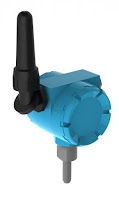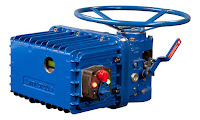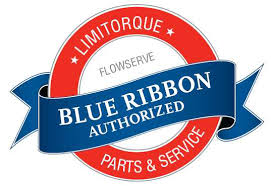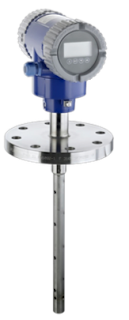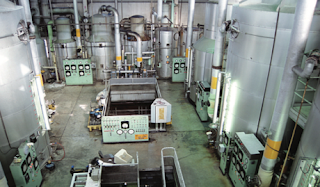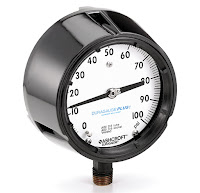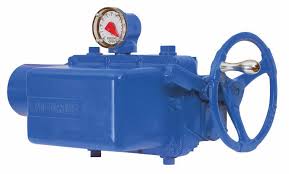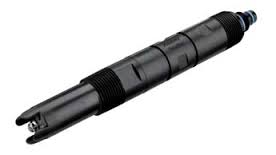 |
Biodiesel production improvement
with conductivity sensors. |
Biofuel products are made from a variety of feedstocks, primarily soybean oil, vegetable oil and animal fat derivatives. Biodiesel is a safe alternative fuel replacement for traditional petroleum diesel.
The biodiesel production process is done through a chemical reaction that combines vegetable oil or animal fat as a raw stock, methanol, and a catalyst of sodium methylate in proper proportions. The process, called transesterification, involves chemically converting triglycerides to smaller methyl esters that resemble diesel fuel with extra oxygen atoms that make it oxygenated diesel fuel enabling it to burn cleaner.
Producing biodiesel fuel is a difficult task that requires precise separation at various stages. Effective separation is critical to the success of the process and the quality of the product.
The plant has four 20,000-gallon reactors and approximately 15 process vessels of various sizes, as well as large field storage tanks used in the delicate separation process.
When emptying the reactors its very important to know exactly where the interface is between the biodiesel and byproducts. If byproducts are left in the fuel, product quality standards are not met and material have to be reprocessed. If your pour out biodiesel, you’re throwing money down the drain.
 |
| Conductivity sensors (courtesy of Foxboro) |
There are a number of ways to detect phase changes, but
conductivity sensing seemed ideal for this application. A conductivity measurement system is relatively inexpensive, very clean and maintenance free, since there are no moving parts.
Foxboro, a world-class manufacturer of process control equipment was called in for a consultation. The initial application is in a batch mode where the company has a pump on the bottom of the reactor. Directly downstream of that pump is a “T” configuration that houses the Foxboro conductivity sensor. At this stage, the biodiesel company needs to separate glycerin, which has a relatively high conductivity, approximately 4,000 to 5,000 microsiemen/cm. The Foxboro probe monitors the conductivity of the fluid passing by and, as the interface occurs, it immediately detects a dramatic drop in conductivity because the methyl ester phase has a conductivity of less than 20 microsiemen/cm. The conductivity sensor then triggers a signal to stop the pump and close the valve. The remainder of what is in the reactor is methyl ester that contains contaminants including excess methanol, glycerin, soaps, catalyst and other impurities.
The second application involves removing these components from the biodiesel fuel before it can be released as a final product. The crude biodiesel is mixed with water to scrub out the impurities, and then the water is allowed to settle to the bottom of the reactor. Because wash water has a high conductivity of about 2,500 microsiemen/cm, the
Foxboro sensors can immediately detect the interface between methyl ester and wash water.
After the washing, the biodiesel goes to the final phase where a vacuum dehydrator warms the wet biodiesel and draws out any residual water. In this third application the Foxboro conductivity sensing probe is used to determine when the appropriate amount of water is removed. At that point what remains is finished biodiesel fuel.
Conductivity sensing technology allowed the successful automation of critical phase separation processes and will allow additional and ongoing process improvements such as automated and continuous processing, and further improvements in production efficiencies and more consistent product quality are expected.
